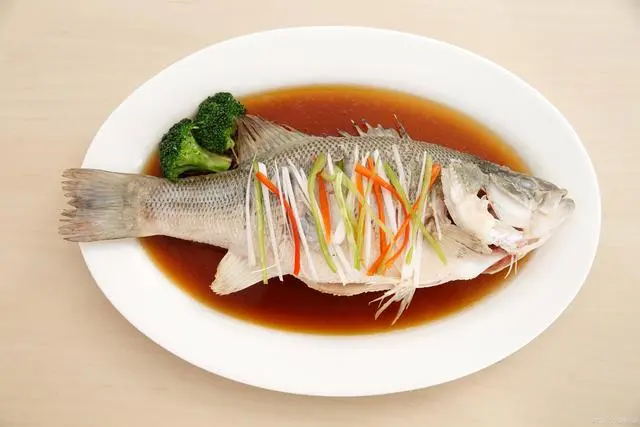The White Pomfret Fish is well known for its variety and delicate taste. Known for its mild taste and tender meat, this fish is one of the must-have seafood in the kitchen. Whether you are an experienced chef or a home cook, knowing how to buy and prepare white pomfret can take your culinary creations to new heights. Our company is specialized in exporting live fish. There are all kinds of fish.
Understanding White Pomfret Fish
The white pomfret is a species of pomfret that grows in the warm waters of the Indian and Pacific Oceans. It is a flat fish with a distinctive silvery appearance and slightly sweet taste. The flesh is delicate, making it ideal for various cooking methods. From steaming and grilling to frying, the white pomfret fish adapts well to different recipes and cuisines.

How to Choose Fresh White Pomfret
- Appearance: Look for a fish with bright, clear eyes and shiny skin. The scales should be intact and smooth.
- Smell: Fresh fish has a mild, ocean-like scent. Avoid fish with a strong, fishy odor.
- Texture: The flesh should be firm to the touch, and the skin should spring back when pressed.
Step-by-Step Guide
- Cleaning: Start by cleaning the fish thoroughly. Remove the scales by gently scraping from tail to head. Next, make a small incision along the belly to remove the innards. Rinse the fish under cold water to remove any remaining impurities.
- Marinating: Marinating is an optional but recommended step. A simple marinade of lemon juice, garlic, and a pinch of salt can enhance the fish’s natural flavors. Let it marinate for about 15-30 minutes.
- Cooking: The fish can be cooked in various ways. If you prefer a light and healthy option, steaming is ideal. Place the fish in a steamer with ginger, spring onions, and a splash of soy sauce for a fragrant and flavorful dish. For a more robust flavor, grilling or frying can create a crispy outer layer while keeping the inside tender.
Popular Recipes Featuring White Pomfret Fish
- Steamed White Pomfret: This classic dish is popular in Chinese cuisine. The fish is steamed with soy sauce, ginger, and garlic, allowing the delicate flavors to shine.
- Grilled White Pomfret: Perfect for summer barbecues, the fish is marinated in a mixture of olive oil, lemon juice, and herbs, then grilled to perfection.
- Fried White Pomfret: A simple yet satisfying dish, the fish is lightly coated in flour and fried until golden and crispy. Serve with a side of tartar sauce or lemon wedges.
Nutritional Benefits of White Pomfret Fish
In addition to its delightful taste, the white pomfret offers numerous health benefits. It is rich in omega-3 fatty acids, which support heart health and reduce inflammation. The fish contains high quality protein, essential vitamins and minerals (such as vitamin D, vitamin B12 and selenium)
Regular consumption of white pomfret fish can contribute to a balanced diet and overall well-being. It is particularly beneficial for those looking to maintain a healthy weight, as it is low in calories and fat.
Pairing White Pomfret Fish with Sides and Sauces
To complete your meal, consider pairing the white pomfret fish with complementary sides and sauces. A fresh salad with a citrus vinaigrette can balance the fish’s rich flavor. For a more substantial side, steamed vegetables or a light rice pilaf work well. Adding sauces, a rich lemon butter sauce or a simple soy sauce and ginger sauce can add flavor to the fish without overpowering it.

Storing and Preserving White Pomfret Fish
If you have leftover white pomfret fish, proper storage is crucial to maintain its quality. Store the fish in an airtight container in the refrigerator for up to two days. If you need to keep it longer, freezing is an option. Wrap the fish tightly in plastic wrap, followed by aluminum foil, and store it in the freezer for up to three months.
When you’re ready to use the frozen fish, thaw it in the refrigerator overnight. Avoid thawing at room temperature, as this can lead to uneven defrosting and potential bacterial growth.
Precautions for Transportation
1. The water needs to ensure sufficient oxygen, and the water temperature needs to be ensured at 5-6 ° C
2. Stop fertilizing 7-10 days before the transport of live fish, stop feeding 1-2 days before the transport, and transport after intensive training or storage by drawing nets.
Conclusion
The white pomfret fish is a versatile and nutritious choice for seafood lovers. Whether you’re preparing a simple weeknight dinner or a special occasion meal, this fish offers endless possibilities. By choosing fresh fish, following proper preparation techniques, and exploring a variety of recipes, you can make white pomfret a star ingredient in your kitchen. With its delicate flavor and numerous health benefits, it’s no wonder this fish is cherished by foodies around the world.












